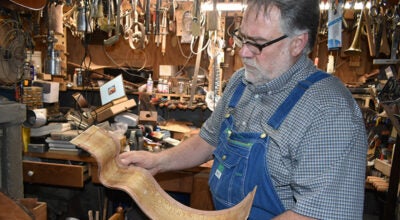The Ray upgrades Wattway solar road near welcome center
Published 9:00 am Friday, December 20, 2019
The Ray, the Georgia Department of Transportation and international infrastructure innovator Colas have unveiled an upgraded version of the Wattway solar road at the Georgia Visitor Information Center located in West Point on Interstate 85.
Colas invented the Wattway solar road in partnership with the French National Solar Energy Institute.
The photovoltaic panels affixed onto the roadway use a patented surface texture designed to provide as much skid resistance as conventional pavement. The Wattway technology enables the road to multi-task, providing both a safe surface for traffic, as well as a new land opportunity for generating renewable energy.
Wattway was installed on the Ray in December 2016. The first year after installation, the Wattway generated enough energy to drive a single electric vehicle about 35,000 miles.
It remains the only public, drivable solar road in the United States.
“In partnership with the Georgia Department of Transportation, The Ray is a cutting-edge pioneer in experimenting with innovative technologies that foster user safety and sustainable development,” Wattway Manager Etienne Gaudin said in a news release. “Thanks to high-quality partners like them, Smart Road solutions such as Wattway can progress. We are happy and proud to have The Ray and Georgia DOT among our partners.”
Since 2016, feedback from The Ray’s I-85 test site has helped Colas to improve installation techniques, the electrical architecture and perfect the patented photovoltaic panel. Wattway has capitalized on this information and developed successive versions of photovoltaic panels that are more resilient and weather-resistant, more compact and more economical. Also, performance has been improved by 21 percent.
“We broke the mold with version one in 2016,” said Harriet Anderson Langford, founder and president of The Ray in a news release. “I give so much credit to Georgia DOT for working with us to permit something so groundbreaking. What we’ve done today is the obvious next step innovation in real-time. This new version is better because of The Ray, and we’re excited to see how it performs over the next several years.”





